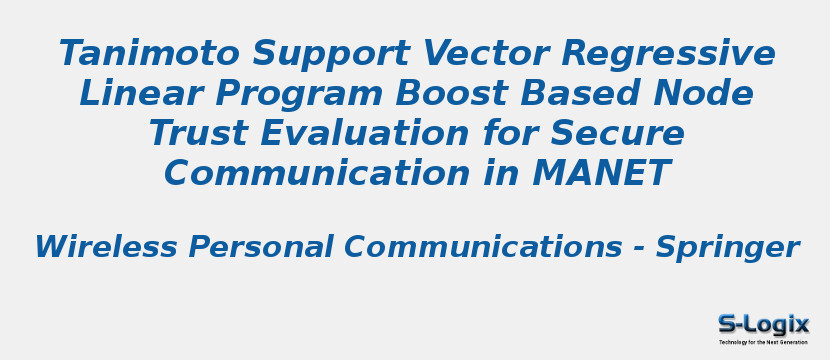Research Area: Mobile Ad Hoc Networks
Mobile ad hoc network (MANET) is an infrastructure-less and self-configuring where the Mobile Nodes (MN) moved autonomously via the wireless network interfaces within the communication range. With the increase of wireless technology, a dynamic network deals with the security problem about data communication with improved quality of service (QoS) metrics. Due to lack of trusted centralized authority, MANET is susceptible to security attacks. In order to address these issues, an ensemble technique called Tanimoto Support Vector Regression Based Corrective Linear Program Boost Classification (TSVR-CLPBC) is proposed in MANET. The main objective of the proposed method is enhancing secure communication with minimum end-to-end delay and increased packet delivery ratio. At first, Tanimoto kernelized support vector regression is utilized as a weak learner to examine node features namely cooperative communication, residual energy, and history of node. The nodes are classified as trusted or malicious based on the analysis. Then, the Linear Program Boost ensemble classifier utilizes n number of weak learners (i.e., base classifier) to discover trusted MN for secure data transmission. The outcomes of weak learners are combined to create strong output of boosted classifier based on weight function. Ensemble classification algorithm discovers the trusted nodes in MANET and data transmission is carried out with the trusted MN to improve the Qos metric performances. Simulation is conducted with different metrics namely packet delivery ratio (PDR), packet loss rate (PLR), end to end (E2E) delay, jitter, and energy consumption (EC). Experimental outcomes evident that TSVR-CLPBC techniques enhance the PDR and lessen the EC, PLR, E2E delay and jitter than the conventional methods.
Keywords:
Author(s) Name: J. Anitha Josephine,S. Senthilkumar
Journal name: Wireless Personal Communications
Conferrence name:
Publisher name: Springer
DOI:
Volume Information: volume 117, pages 2973–2993 (2021)
